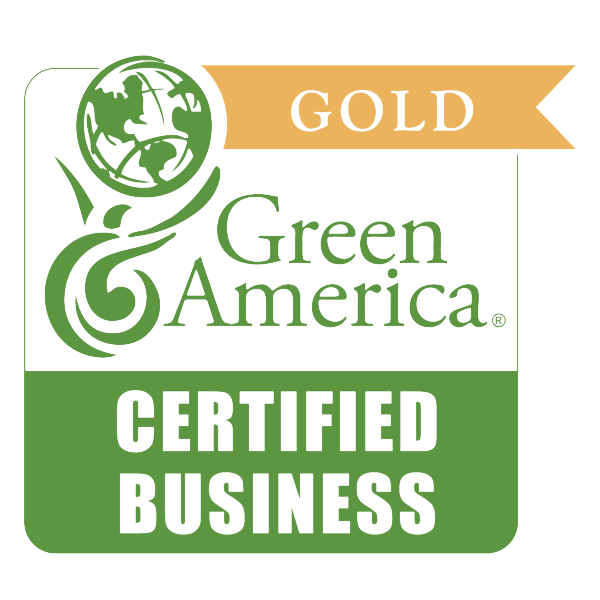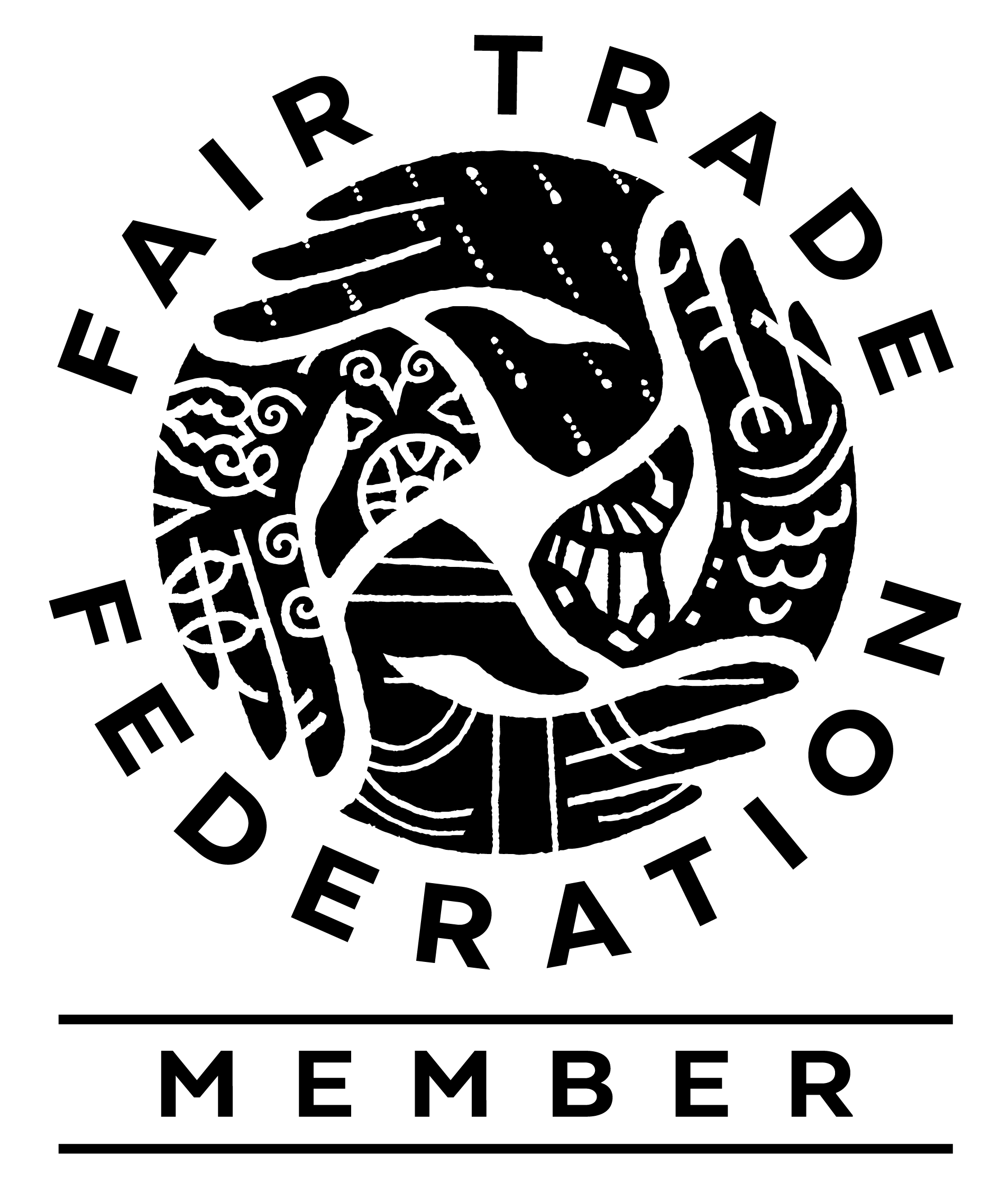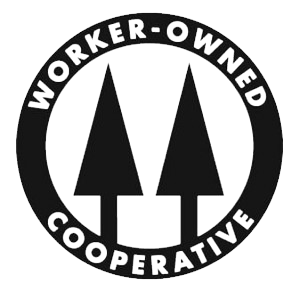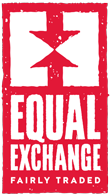
You can be a part of changing the food system!
For over 30 years, Equal Exchange has worked together with farmers and consumers to change the way that our food is grown and distributed, and to give farmers a fair shake.
On June 9th and 10th, Equal Exchange held our first People’s Food System Summit at Stonehill College in Massachusetts to explore how to broaden the food activist movement. We gathered 50 Action Forum citizen-consumers and 50 Equal Exchange worker-owners together with visiting small-scale producers to discuss a wide variety of issues. Many rich discussions took place, leaving us motivated and inspired to continue building this movement together.
Here are some of our reflections from workshop sessions at the summit!
During his workshop session, Equal Exchange Co-Executive Director Rob Everts presented an overview of his experiences in community organizing and leading social and political movements.
Rob began the session by pointing out that while most consumer boycotts are “time-bound,” meaning, consumers are organized to protest against a specific store, company, product, or commodity for a specific period of time, the boycott either produces the change it seeks or it doesn’t, after which the organizers and consumers move on. Even though the Action Forum seeks to build a more lasting, ongoing model for organizing consumers, it seems prudent to look to past campaigns for guidance in building this model.
Rob’s story of how he was motivated to live a life of political activism and organizing by United Farm Workers members was stirring. The UFW, including Rob’s brother, had been picketing against Gallo wine outside of a liquor store that was on his way home from school. Nervous as he was about engaging consumers one-on-one about the consequences of their purchases, sibling rivalry finally got the better of his fear, and he joined the protest. Rob also talked about his relationship with Fred Ross, who was a behind-the-scenes mentor to Caesar Chavez, and ultimately to Rob as well.
After years of working with the UFW, Rob moved east to help organize hotel and restaurant workers, and ultimately founded Neighbor to Neighbor, which successfully campaigned to shut off aid from the US government to the Contras in Nicaragua. Inspired by the anti-Apartheid movement, as well as Rob’s past activism with the UFW, Neighbor to Neighbor then embarked on a boycott of Folger’s coffee. The goal was to put pressure on the (then) manufacturer of Folger’s, Procter and Gamble, to stop supporting the oligopoly in El Salvador that was carrying out a brutal civil war against its people. This ultimately brought him into contact with members of the young Equal Exchange co-op, and the rest is history.
The supermarket shelves are not as diverse as they seem.
Annie’s Homegrown. Stonyfield. Applegate Farms, Kashi. Back to Nature. Lara Bar. Late July. During this workshop, there were gasps of “Oh no!” from the audience as we examined a food web showing how corporations like General Mills, Mondelez, Pepsi, Hormel and Hain Celestial have been hungrily buying up our favorite food brands — brands we love and have trusted to stand for the things we ourselves stand for.
“Unless you look closely, you wouldn’t know they were the same brand,” said Phil Howard, a professor in the Community Sustainability department at Michigan State University, who has been researching the consolidation trends in the food and beverage industries for years. “It looks like you have a lot of choices. There are fewer and fewer people making decisions about the food we eat.” The increasing trend has been that corporations are acquiring as many profitable organic brands as they can, trying to control the market without making these changes visible on packaging.
Why should it matter if these brands are no longer independently owned? Howard explained that large corporations often have an agenda and must answer to their shareholders. This means that well-intentioned consumers are often unknowingly supporting agendas that may not match their own values. Brands that originally had strong values and a commitment to quality, organic ingredients and sustainable practices are now subject to owners whose main motivation is frequently increased profits, not consumers. By purchasing a sub-brand of a mammoth, multinational corporation, consumer dollars are going directly into that larger organization and, without knowing it, we could be supporting things we may not actually agree with and reinforcing trends that we ultimately don’t want to see increasing.
In spite of this discouraging trend, Howard explained that “there is a positive counter trend moving towards real diversity.” There are a handful of companies, like Equal Exchange, who have chosen to remain independent despite buyout offers. Howard recommends focusing our efforts on creating alternatives and raising awareness surrounding these issues. He suggested the website “Buycott.com” whose slogan is “vote with your wallet” as a resource to help consumers determine where their money is really going, in the food sector and beyond.
By working together and looking deeper we can stay informed and choose to support brands and movements that are working towards shifting the power structure, increasing diversity in the food system and ensuring future access to healthy, affordable, food for everyone.
Learn more about Phil Howard’s research online and check out his book, Concentration and Power in the Food System: Who Controls What we Eat?
Edith Stacey-Huber and Adi Faribank discussed their experiences with buying clubs, sharing how they work around traditional grocery entities to bring food to their communities. Edith first organized a buying club in Ontario to make organic food affordable to families in her neighborhood, and eventually she brought that model to Michigan. Each of the four dozen families involved in the club is the buyer for one specific farm, in order to make it more sustainable. Participants are committed to purchasing food that’s grown locally, versus food that’s regulated and labeled. Edith overcame eight months of Michigan state bureaucracy around warehouse licensing until member families were able to purchase and store food sourced directly from farms.
Adi Faribank helped the project to grow by creating a non-corporate information system which made things much easier on the members. The community-based nature of the open source software provided a model for systems development. Adi applied his computer science learning to the project in 2003, and by 2006 it was processing over a quarter million dollars of food orders with a dozen buying clubs. By 2015, that participation jumped to $6.5 million. With the growing use by different groups Adi added back-up servers and program improvements including a user fee to the software.
The software allows families to source locally and then manage their purchases through an alternative food system tailored to each club’s needs. The major differences to the corporate food system is that there is traceability back to every farm or kitchen, the food is fresher, more money stays with the member families, and there is no food waste.
Edith strongly endorses the buying club as of a form of food activism. “I still remember the first bite of a locally sourced walnut and how amazingly good and different it was from a walnut from the grocery store,” noted Edith. Member families do have to adapt to the limited hours and there is a need to move to a business model (not volunteer) so that families who dedicate lots of time can get compensated by the families who have less time to dedicate. Edith and Adi are happy to help any group to that wants to get started. Join the Action Forum to start the conversation!
Do you want to get involved in this movement and participate in future events with us? Join the Equal Exchange Action Forum to become a member of this growing community of activists, advocates and citizen-consumers.
We’re proud to offer fairly traded, organic olive oil grown by small-scale farmers in the West Bank. We believe this olive oil is truly special, both for what it is as a product and for the story behind it. Watch the video below and read on to learn more!
In 2007, Jim Harb of Knoxville, Tennessee, was asked to help start Olive Branch, a local non-profit social enterprise to support West Bank Palestinian olive farmers. His co-founder searched the internet and found Tania Maxwell, one of the first U.S. importers of West Bank olive oil. Tania and another woman interested in crafts had traveled by themselves to Ramallah in the West Bank on behalf of Palestinian rights groups, trying to find ways to assist Palestinians to survive economically.
Tania started an olive oil partnership with the Palestinian Agricultural Relief Committee (PARC) which she ran out of the basement of her home in Cambridge, Massachusetts, for over five years. Olive Branch started ordering cases of oil from Tania to supply Episcopal, Methodist, Presbyterian, and other congregations in the southeastern U.S. that wanted to advocate peacefully for the Palestinian people.
When Tania retired in 2012 after five years, she asked Equal Exchange if we wanted to take up where she left off. We did. A few of us traveled to Ramallah and met with PARC leaders, and we were convinced that continuing the partnership was vital work. Jim Harb and the congregations he worked with then became partners with Equal Exchange, ordering thousands more bottles of PARC oil over the past five years. Jim’s story demonstrates how an activist can help make a huge difference, and how groups of individuals working together for social justice through their congregations can provide tangible support to people in need. Jim and congregants from the Southeast U.S. are part of the movement to help Palestinian olive farmers stay on their land, feed their families, and educate their children while working toward a better future.
This year marks the 11th anniversary of Equal Exchange’s Fundraising Program! The program started with Virginia Berman, a co-owner and the Organizing Director at Equal Exchange at the time. One of the roles of the Organizing Department was to find supporters of Equal Exchange and provide them with the resources to spread the word about authentic Fair Trade, and conscious consumerism.
Equal Exchange’s Organizing Team began receiving requests from parents for a fundraising catalog. Some parents had been fundraising on their own with Equal Exchange products, but many parents had trouble convincing their PTAs to choose Equal Exchange without the benefit of a traditional catalog.
In response to requests, an entrepreneurial member of the Organizing team, Julia Khodebandeh put together Equal Exchange’s first fundraising catalog and the school fundraising program was born! Equal Exchange co-director Rob Everts, was excited to reach a younger audience and create educational resources for teachers and parents to use alongside the fundraiser.
The first catalog included just four products: two coffees and two cocoas! Still, the program gained momentum right away through word of mouth. Parents talked to other parents, shared the Equal Exchange mission, and the program kept growing! By year four, it was thriving.
Through the years, the catalog and program expanded, largely in part to strong relationships with like-minded organizations and groups. Two relationships that were integral to the success of the program were with the Montessori Schools and the New York State United Teachers. Both relationships helped us reach new groups of individuals and helped put our shared social justice mission into action. These relationships helped us boost our sense of purpose and fine tune the educational aspects of our program. We were also very lucky to have partnered with Ten Thousand Villages for six years, offering fairly traded crafts as part of our fundraising catalog. With this partnership, we were able to offer communities more ways to support farmers and artisans through their purchases.
One of the best aspects about the fundraising program is that it is constantly innovating! Over the last 11 years, the program has never been stagnant — we are always thinking of new ways to help make fundraising easier for our customers and to keep things fresh and exciting.
We’re proud to offer a fundraising option for schools and groups that they can feel good about bringing to their communities. In particular, we’re pleased to offer parents and educators tools to help introduce their students to the important concepts of Fair Trade, conscious consumerism, climate change, gender equality, income equality, and so much more.
While thinking about the future, we continue to ask ourselves how can we get to the next level and establish a greater presence in the fundraising world. We also continue to ask ourselves how we can improve our process to make things easier for participants. Beyond that, we hope to reach new audiences and create more incentives, materials, and guides for the groups that are currently using our program.
One idea that we are interested in bringing back is the creation of a fundraising advisory team, made up of parents and administrators who will gather ideas and provide us with insights about what their schools, friends, children, and community are looking for out of this fundraiser.

Thank you to Virginia Berman and Rob Everts for reflecting on the past 11 years of the program with me! I started in this position about a year and a half ago, so it was a great experience to learn more about its beginnings, how it has changed throughout the years, and what they would like to see in the program’s future.
Virginia Berman has moved on from Equal Exchange and has created her own organization called Invent Boston. One of the inspirations for her starting her own company was experiencing the everyday challenges of running a home, with jam packed schedules. Here is a information about her first product, Toothbrush Timer, a Two Minute Turtle, which was created to make brushing teeth easier for children and parents. You can find out more about her organization on her website. We wish her well!
A lot of effort goes into growing, shipping, roasting and packaging coffee to ensure a great-tasting cup. However, the benefits of those efforts can be lost at the very end of the line: in your own home! The way you store coffee has a profound impact on its taste and shelf life, so here we will explore the best ways to keep your beans fresh and delicious — plus a few pitfalls to avoid.
The first step in learning how to store your coffee is to understand what causes coffee to lose its freshness and flavor. Coffee is sensitive to several environmental factors, including air, moisture, light and heat. Coffee readily absorbs surrounding smells and moisture, which will negatively affect the flavor (“leftover garlic pizza” is not a tasting note you want). Light and heat both introduce energy into the coffee, speeding up oxidation and spoilage.
Now that you understand the enemies of coffee freshness (light, moisture, heat and oxygen), you can do what it takes to minimize their effects. Store your coffee in a cool, dry place, like your kitchen cupboard or countertop. Keep it in an opaque, airtight container — you can even keep your coffee in its original packaging, rolled tight and enclosed in a resealable plastic bag. If you want to go the extra mile, try a vacuum canister to remove excess oxygen and moisture between brews. Be sure to keep your container away from the stove, or above the refrigerator or microwave, as these appliances all generate heat which can affect the beans!
Keep it out of the fridge. This is a common misconception! While refrigerators do keep many things fresh, coffee is not one of them. Coffee will quickly absorb the moisture and smells in your fridge, causing it to spoil and take on the flavors of the foods around it. The cold doesn’t increase the shelf life of the beans, either — room temperature is just fine.
Keep it out of the freezer, too! Similar to storage in the fridge, the freezer does provide help in dealing with some of the elements that damage freshness. But these are often negated by increased exposure to moisture, including moisture caused by condensation as you move coffee in and out of the freezer. Similar to the fridge, there is also the risk of the coffee absorbing smells from the surrounding foods in the freezer.
Avoid buying coffee that is already stale. Not all coffee is packaged equally, and it might have lost freshness before you even get to it! Keep an eye out for a tightly sealed bag that is made to resist light and moisture. The bag should also have a one-way seal to allow CO2 to escape after the roasting process. If the bag lacks a one-way valve, it means the coffee was allowed to sit for a number of days to off-gas before it was packaged. In other words, the coffee went stale before it even went in the bag! You can also look for nitrogen-flushed bags, which help remove excess oxygen from the bag before it’s sealed. Finally, you want to purchase coffee that was roasted as recently as possible. Buy direct from a roaster or look for best-by dates to make sure your coffee isn’t past its prime.
Now that you’re equipped with the knowledge to store your coffee right, you’ll be able to get the best out of your beans every time you brew.
Do you have any other tips for storing coffee? Let us know in the comments below.
When the weather gets warmer and the days get longer, it’s time for backyard cookouts, sipping cold drinks, and frosty desserts. Here are a few of our favorite summertime recipes, each featuring organic, fairly traded ingredients!
Cold Brew Coffee
Ingredients:
Your favorite Equal Exchange coffee! Try Organic Cold Brew or Organic Love Buzz.
Directions:
1. Using a Toddy brewer, combine 12 oz of ground coffee with 7 cups of cold water.
2. Let the coffee and water combination stay at room temperature for 12-24 hours and filter the grounds when the brew cycle is complete.
3. Store as a concentrate for up to two weeks in the refrigerator.
4. Serve with ice!
For more detailed instructions, click here.

Iced Tea Concentrate
Ingredients:
Try your favorite tea iced! Try Organic Vanilla Rooibos, Organic Black or Organic Mint Green.
Directions:
1. Boil 8 cups water and pour into a heatproof glass pitcher.
2. Add 15 tea bags of your choice (with strings, tags and staples removed) and let steep for 5 minutes.
3. Remove the tea bags and let cool to room temperature.
4. Transfer to sealable containers and refrigerate.
5. When you’re ready to drink, add 1 part concentrate to 3 parts water and ice in a glass or pitcher.
Simple Syrup
Sweeten your tea or iced coffe without the sugar crystals lingering at the bottom of your glass! Simply combine 1 part sugar with 1 part hot water just off the boil and mix well. Add to your glass or pitcher to taste.

Grilled Lemon Pepper Chicken
Ingredients
4-6 boneless skinless chicken breasts
1 c. Equal Exchange Organic Extra Virgin Olive Oil
2/3 c. lemon juice
2 tsp. minced garlic
1 medium onion diced
½ tsp. pepper
½ tsp. salt
Directions
1. Whisk together olive oil, lemon juice, minced garlic, salt and pepper. Then add the diced onion.
2. Transfer marinade to a gallon sized plastic bag or container and add the chicken. Place in the fridge and marinate overnight.
3. Place the chicken on a preheated grill and sprinkle with pepper. Cook for about 20 minutes or until cooked through, with no pink in the center.
4. Grill additional lemon slices, for garnish.
5. Serve and enjoy!
Adapted from The Recipe Critic
Citrus Collards with Raisins
Ingredients
2 large bunches of collard greens, chiffonaded, rinsed, and drained
Coarse sea salt
1/3 c. fresh orange juice
1 Tbsp. Equal Exchange Organic Extra Virgin Olive Oil
2 garlic cloves, minced
2/3 c. Equal Exchange Chilean Flame Raisins
Directions
1. In a large pot over high heat, bring 3 quarts of water to a boil and add 1 tablespoon salt. Add the collards and cook, uncovered, for 8 to 10 minutes, until softened.
2. Prepare a large bowl of ice water to cool the collards.
3. Remove the collards from the heat, drain, and plunge them into the bowl of cold water to stop the cooking and set the color of the greens. Drain.
In a medium sauté pan over medium heat, warm the oil. Add the garlic and sauté for 1 minute. Add the collards, raisins, and ½ teaspoon salt. Sauté for 3 minutes, stirring frequently.
4. Add orange juice and cook for an additional 15 seconds. Do not overcook (collards should be bright green). Season with additional salt to taste if needed and serve immediately.
This content is from the book Grub by Anna Lappé and Bryant Terry.

Ice Cream Cookie Sandwiches
Ingredients
½ c. unsalted butter, room temperature
½ c. granulated sugar
½ c. light brown sugar
1 large egg
1 tsp. vanilla extract
½ tsp. salt
1 ¼ c. all-purpose flour
6 Tbsp. Equal Exchange Organic Baking Cocoa
½ tsp. baking soda
2 c. of your favorite ice cream
Directions
1. Preheat oven to 350 degrees.
2. Add butter and sugars to a large bowl and mix on medium speed with a hand mixer until light and fluffy.
3. Add egg, vanilla extract, and salt. Beat until well incorporated.
4. Combine flour, cocoa powder and baking soda in a separate bowl. Whisk together until well combined.
5. Switch the hand mixer to a low speed and slowly add the dry ingredients to the wet ingredients. The batter will be thick – mix only until everything is combined.
6. Spoon the cookie dough onto your baking sheets and bake for 9 to 12 minutes. Cool on baking sheets for 5 minutes, then transfer to a cooling rack.
7. While the cookies are cooling, line a baking sheet with parchment paper and scoop ice cream into balls – as many sandwiches as you want to make. Once you have all your scoops, immediately put the baking sheet in the freezer.
8. When the cookies have completely cooled, remove the ice cream from the freezer. Using a piece of parchment paper and your palm, gently push down on each ice cream ball to flatten it slightly and fit the width of your cookies.
9. Place the pressed ice cream balls between two cookies, firmly but gently enough not to break the cookies.
10. Serve and enjoy! Or you can wrap them in parchment paper, plastic or foil to preserve them in the freezer until needed.
Adapted from Inspired Taste

Classic Fudge Pops
Ingredients
6 oz. Equal Exchange Organic Very Dark Chocolate
2 c. whole milk
½ c. cream
¼ c. sugar
2 Tbsp. Equal Exchange Organic Baking Cocoa
2 tsp. vanilla
1 tsp. kosher salt
Directions
1. Break chocolate into pieces and put into a blender. In a saucepan, bring milk, cream, sugar and cocoa to a low boil, then immediately remove from heat. Pour the milk mixture over the chocolate in the blender, add vanilla and salt and let sit for a few minutes until the chocolate is softened. Blend on a low speed until the mix has emulsified and is smooth.
2. Pour the mixture into ice pop molds. Let sit in the freezer for about 1 hour before inserting wooden sticks, if needed.
3. Freeze well for 24 hours. Enjoy!
Adapted from the New York Times
I started at Equal Exchange almost two years ago, as a sales rep in Philadelphia. The path that led me here to our co-op was not the most intentional. I went on a series of brutal interviews for a personal assistant job to try to get my foot in the door somewhere in the environmental and community building fields. I spent a year going through interviews, and felt the humanless nature of the whole process; I was a number or name on a piece of paper. I applied to Equal Exchange with little knowledge of Fair Trade and the cooperative movement, but was attracted to a line in the mission statement to work toward a “more equitable, democratic and sustainable world.”
Upon being hired I was warmly welcomed into a community that valued learning, autonomy and risk taking in order to learn. I quickly felt valued as a member of a bigger collective with a shared vision. I felt supported and encouraged. Not only did Equal Exchange value me as a worker and member, but my voice was heard and thoughts valued. During my time spent working in Equal Exchange’s sales department, I had a supervisor that consistently encouraged me to find spaces where I could nurture my skills and passions. The opportunity to work more closely with Equal Exchange’s mission came along through the Organizer position last year and I decided to go for it. With no community organizing experience, I had a team that was again willing to give me a shot.
The Equal Exchange Action Forum is a space within Equal Exchange for individuals to join a virtual and physical community to network, learn and challenge the injustices within our food system. It’s a vehicle to build an authentic and democratic community, and a tool to foster connections and relationships that will connect us to each other and our food. As an Organizer for the Action Forum I see myself as a dot connector to help facilitate building an even bigger community with our customers and allies. Despite the system’s power to commodify every aspect of our lives, including our abilities to connect with one another, here we have the opportunity to create something anew. That element is what truly inspires me to get up and do this work every day. Equal Exchange to me has always been about creating community and fostering connections to people.
Frankie Pondolph, center, with Equal Exchange Co-President Rob Everts, left, and Co-Organizer Danielle Robidoux at an Action Forum event in Jamaica Plain, MA. Photo by Alexander Novakovic, The Daily Free Press.
Today, our growing Action Forum community has around 400 members spanning three different time zones. Our membership is diverse in age, background and passions; each person has a different relationship to Equal Exchange or connection to the work we have been putting forth for 30 years. This, to me, is one of the most fascinating parts about creating the Action Forum: the space to build something organically together. It really is about showing up, having conversations with one another and slowly building something that gives everyone a seat at the table to create the future we’d like to see.
This June we are hosting the first-ever gathering of this growing community, bringing together Equal Exchange worker-owners, our farmer partners and Action Forum members for two days of planning, learning and sharing together. The People’s Food System Summit will include sessions on climate change and its affect on our producer partners, the corporatization of our food system, and alternative food distribution models. The second day is carved out specifically for planning with members on how we may mobilize around an action in the upcoming year.
In many ways this work feels like returning to our roots, 31 years in. The Action Forum creates a space to allow the humanness and relationship building to continue to be a part of what makes Equal Exchange so unique and special. A space where we can take risks, learn, and innovate together. To do this we need to hear your stories, your challenges and your vision.
I hope we can continue to grow the Action Forum community and to continue to use Equal Exchange as a vehicle to propel systematic change – for a more equitable, democratic and sustainable world.
“I salute the present generation. Hang on to one of your most precious parts of youth, laughter – don’t lose it as many of you have seem to have done, you need it. Together we may find some of what we are looking for – laughter, beauty, love and the chance to create.”
— Saul Alinsky, community organizer
If you’re interested in joining the Action Forum or attending the People’s Food System Summit on June 9-10, 2017, fill out an application here or send an email to eeactionforum@equalexchange.coop
How do your fellow parishioners react when you propose fairly traded coffee for sale or fellowship hour? Do you get a yawn, or a pat on the back, but not much support? Do you quote Matthew 25, Luke 10 or Laudato Si’ to no avail?
In his book on church organizing, Activism That Makes Sense, Gregory Pierce points out a reason for apparent apathy: many people—including many Catholics—tend to feel that if an issue does not directly affect their self-interest they should leave it to people who are directly affected.
To reach those people, you need to drop the charity argument and point out that the well-being of others, especially in countries close to ours, affects us directly and immediately.
The countries of Guatemala, Honduras and El Salvador for example, are currently experiencing gang violence, high unemployment, unbalanced distribution of wealth and inadequate infrastructure. Their societies cannot provide all the jobs they need or safety for all their people. Migrants searching for jobs and safety travel to where these are available, the United States, so they can support their families back home.
In the last few years hundreds of thousands of people have travelled from Central America to the United States. Many Americans fear that these immigrants will compete for jobs in a bewilderingly changing economy. We have been told that migrants are “bringing drugs” and “bringing crime” and that we need a two thousand mile long wall to keep them out.
They’re not bringing drugs and crime, they’re fleeing drugs and crime. Spending billions of dollars building a wall on the U.S. Mexico border is like ordering the ocean tides to stop rising. It would be far more effective to help mitigate the conditions which force people to migrate.
Equal Exchange and other alternative trade organizations collaborate with small farmers who have pooled their resources in cooperatives. We offer long-term relationships, stable, above-market prices, affordable credit and collaboration in sustainable development.
In buying fairly traded coffee you are acting in your own self-interest, collaborating with the people of Central America to build safe, stable, prosperous societies on our borders, to trade with us on a more equal footing and who have the means to do what most of them want to do in the first place, stay home with their families.
By Rob Everts, President
In The Citizen-Consumer Dilemma, Part One and Part Two, we discussed many of the challenges facing consumers, and many other players along the food supply chain. We talked about the insidious steps corporations have taken to achieve virtual total control of food, from the farm to processing to distribution to retailing. We looked at some reform efforts to rebalance the power equation more in favor of small farmers and their democratically organized cooperatives, food co-ops, non-corporate owned brands and end users.
In this often bleak landscape, how can citizen-consumers come together as a political, thinking community? What can we learn from past efforts, and from the current efforts of others involved in the movement for food justice? Equal Exchange has taken the step to create a community of people working together to deepen our collective understanding of these issues and to take actions where strategic, through the creation of the Equal Exchange Action Forum.
“We need to understand the systems we operate in, and how it can be changed by reform, and how those reforms themselves get digested and weakened by a prevailing company-brand system that is, in many ways, the problem,” Equal Exchange President Rink Dickinson and Deepak Khandelwal stated in Part One. In other words, are there strategies we can employ that have a shot at taking back control, and that can be inoculated against eventual digestion by corporations?
A common thread that appears across these efforts is organization. When small-scale farmers organize into cooperatives, they at least have a shot at holding on to their land and supporting their families. When farm workers organize into a union or similar association, they have leverage to fight for better wages and working conditions. When sponsoring groups organize boycotts of products that are based in exploitation—and commit sustained resources to the undertaking—people respond and gains are made.
What then, would be required for citizen-consumers to organize to inject more equity and justice into a food system dominated by large players who have a permanent interest in maintaining the status quo and a year-round lobbying force to ensure policy makers support the corporate agenda? To bring it closer to home, how might members of the Equal Exchange Action Forum engage?
A key goal in any of these would be to consider what approaches work best to engage people in the long-term struggle required to effect big changes. The necessary tools and conditions needed to organize ourselves for a long-term undertaking like this are not self-evident. But, we know from the Bernie Sanders campaign and the Resistance movement that there are millions of people hungry for dramatic change and who know that corporate power, broadly speaking, is at the root of many of the injustices in the world today.
An Action Forum event at the Equal Exchange Cafe in Boston.
If you would like to engage in person with Equal Exchange worker-owners and Action Forum members, we invite you to become an Action Forum member and then join us for the two-day gathering.
JUNE 9-10, 2017
WHAT: This will be the first-ever Equal Exchange People’s Food System Summit and gathering of the entire Equal Exchange community that connects all parts of our supply chain. Our goals are to organize Action Forum members, farmer partners, and worker-owners together in this physical space.
We will be hosting workshops, a roastery tour and cookout at our headquarters, and we will make plans for how we can organize to take back control of the food system, together.
WHERE: Stonehill College in North Easton, MA and Equal Exchange Headquarters in West Bridgewater, MA.
*Food and accommodation will be provided by Equal Exchange on Thursday, June 8, and Friday, June 9.
Learn more about the summit here: https://equalexchange.coop/peoples-food-system-summit
Interested in attending? Give us a heads up at eeactionforum@equalexchange.coop
When deciding between ground coffee and whole bean coffee, it comes down to a question of convenience vs. the opportunity for better quality. We’ll break down the details below with some questions you can ask yourself to determine which one is right for you.
When choosing between whole bean or ground coffee, you’ll first want to consider what brewing method you’ll be using. In general, pre-ground coffee is the right coarseness for drip brewers, like manual pourovers and standard home coffeemakers. Pre-ground coffee will not work well for brew methods which require a fine or coarse grind, such as an espresso maker or percolator unless the grind on the bag specifically states it is ground for that method. If you’re not using a traditional drip/pourover brewer at home and need a fine or coarse grind, you’ll need to select whole bean coffee for the best results.
Once you have established that the grind is correct for your brew method, you will want to determine how quickly you consume coffee. Most coffee is stored in nitrogen-flushed or airtight bags shortly after roasting to preserve freshness. Once the bag is opened and exposed to air, the coffee will start to lose freshness. Ground coffee loses its freshness more quickly due to the increased surface area exposed to air after grinding. For the average coffee drinker, ground coffee that is stored in an airtight container and consumed within 1-2 weeks will maintain enough freshness to brew a good cup of coffee. If you’re not likely to get through your selected quantity of coffee in this timeframe, whole bean coffee might be the better choice.
Suffice it to say, pre-ground coffee is a bit more convenient than whole bean coffee — it’s ready to go right out of the bag. With whole bean, you will need access to a burr grinder, and you will need to measure and grind the correct quantity of coffee for your daily brew. You’ll also need to ensure your burr grinder is grinding to the correct size, and make sure to regularly clean and maintain your grinder for the best results. So if you’re pressed for time, pre-ground coffee might be the better choice. But if you have a little more time on your hands, and you feel a little extra effort is worth it for a better cup, whole bean coffee might be the better option for you.
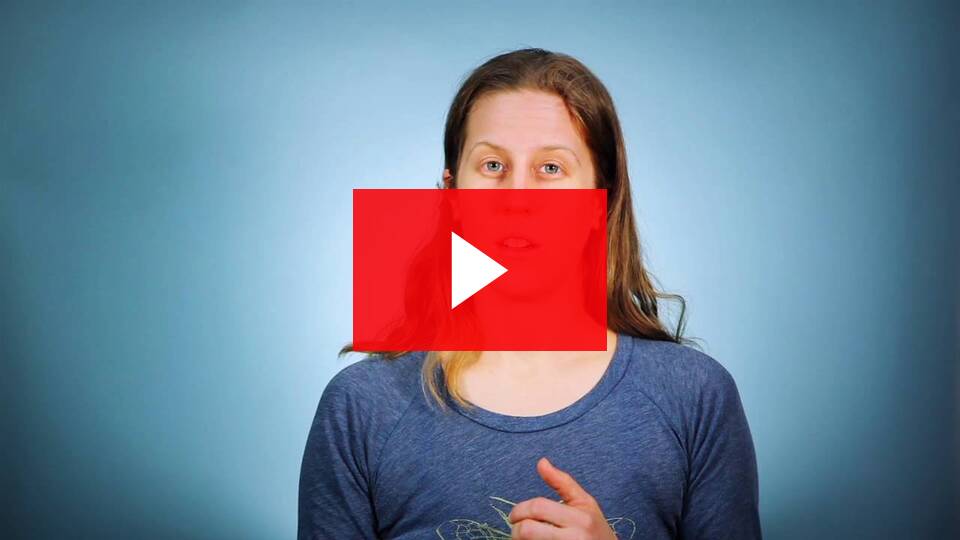
Do you dream of coffee every night and take pride in brewing the best coffee around? If so, you’ll probably want to go the whole bean route, since it gives you maximum freshness and control. But be careful: you can also end with a worse cup of coffee from whole beans if you don’t grind them correctly. The advantage to pre-ground coffee is the grinding process is highly controlled for uniformity and consistency. If you’re grinding your own coffee, you’ll need to use a burr grinder to achieve the same uniformity and consistency. If you’re willing to put in the extra effort for a proper grind, you can achieve superior results. In addition, by grinding your own beans, you’ll be able to make the micro-adjustments, either coarser or finer, to achieve optimal extraction and the best possible cup.
In summary, when choosing between whole bean or ground coffee for your home brewing experience, consider the following benefits and drawbacks to each option.
Did we miss something in this article? Feel free to leave a comment below.
For a wide selection of both whole bean and ground coffee, visit the Equal Exchange web store.
Because coffee, tea, and cacao (which becomes chocolate) aren’t grown in most places in the U.S., many local farmer’s markets allow folks to sell these items at booths, especially when they’re fairly traded and organic. If you’re used to sell Equal Exchange products at your church table sale or for your community group, the farmer’s market is a great way to connect with new people. It’s also a good way to have more in-depth conversations about food justice.
Many people understand the value of supporting their local farmers and paying prices that reflect the true cost of growing and harvesting their organic crops, and this is a great opportunity to explain that for non-local products, small-scale farmers deserve fair pricing too.
Find out how to get a permit. Information is often available through your town’s web site, or ask a vendor at your local market who you should call. Permits become available as early as February or March. You will most likely have to submit an application and pay a fee. Then, figure out how often you want to sell. Some markets allow you to be a “visiting vendor” and sell once a month. Secure your spot by obtaining a permit with your local government office.
Jeanne Clapp is a social justice advocate who’s been selling Equal Exchange at local farmer’s markets in Pennsylvania for years. Here are her top tips to have a successful farmer’s market table. 
Can I order the products on consignment and return any leftover products?
Because our products are perishable food items, we are not able to sell them on consignment. Our hope is that our low wholesale prices make it easier for you to place your first order, and that soon the program will pay for itself and give you additional profit.
Which products do you recommend I offer for sale?
We suggest starting conservatively, with just 2-3 types each of coffee, tea, and chocolate, then expanding as you learn what your customers’ favorites are.
Some of our best-sellers are:
Organic Mind, Body and Soul Coffee
Organic French Roast Coffee
Organic Breakfast Blend Coffee
Organic Decaf Coffee
Organic Ginger Tea
Organic Green Tea
Organic Rooibos Tea
Organic Panama 80% Extra Dark Chocolate
Organic Dark Chocolate with Caramel Crunch and Sea Salt
Organic Dark Chocolate Minis
Organic Palestinian Olive Oil
Organic Tamari Roasted Almonds
Natural Pecans
Organic Dried Mango
How much should I charge?
Are you hoping to raise money through the market? If so, how much money do you need to raise? Is your goal to expose more people to Fair Trade products, without necessarily making a profit for your group? The lower your prices, the more people will buy. You might want to do some research to find out how much products like these cost in local stores or what people in your community are accustomed to paying. Think about any extra costs so that you can ensure that your efforts become self-sustaining. Consider marking things up a dollar or more to cover the market booth fees and also your time. You can get free shipping by ordering at least $135 worth of product with each order. You might want to offer some bite sized samples of chocolate or nuts to draw people to your table and spark interest in the products. The cost of these samples will be another factor.
Check out our Wholesale Product List
We recommend the following educational and display items for effective and eye-catching farmer’s market set-ups: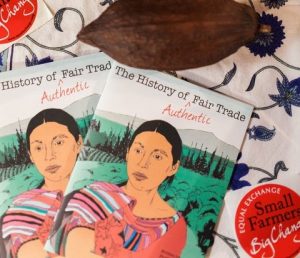
The History of Authentic Fair Trade Comic Book #44202
Table Signs #50004
Chocolate pamphlets #45006
Tea pamphlets #45051
Equal Exchange general info brochures #45004
Power to the Farmers stickers #45030
Olive Oil bottle gift tags #72521
If you’re sampling coffee, use air pot label stickers to tell people what kind of coffee you’re featuring:
Community Sales Airpot Labels #46223
Or order by phone: 774-776-7366

